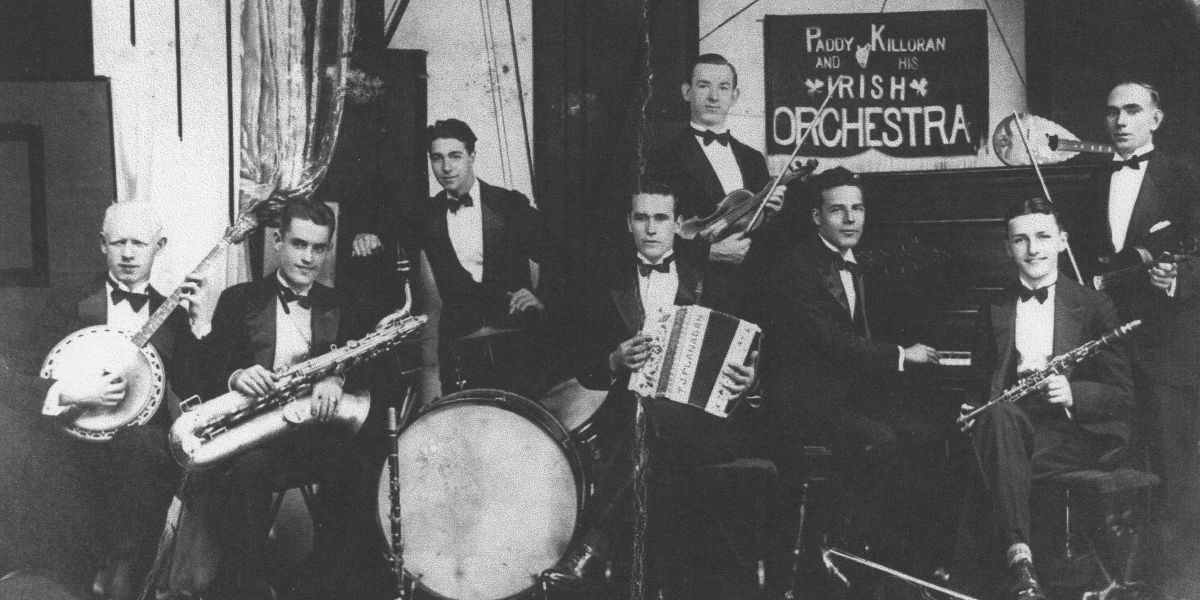
1904–1965

Of the celebrated south Sligo fiddle players who recorded in New York in the 78 rpm era, Patrick J. “Paddy” Killoran was the youngest, and enjoyed the longest life and career.
He was born on 21 September 1903, Killoran in the townland of Emlaghgissan near Ballymote. Music was in the family. His father Patrick played the flute and his mother Mary the concertina but Killoran, perhaps influenced by local fiddle master Philip O’Beirne, took up the fiddle.
Following an adventurous youth that included a stint in the South Sligo Brigade of the IRA, Killoran took an emigrant ship to New York. Within two years, he was lodging with fellow Sligo fiddler James Morrison in west Harlem and playing in Morrison’s “orchestra,” a label attached even to small dance bands of the day. Killoran soon launched his own orchestra, one that took the name of the Pride of Erin Ballrooms in Brooklyn before moving on to west Harlem to become the “Sligo Ballroom Orchestra.”
The Irish ballrooms of New York in the 1920s and ‘1930s were two-room affairs – one dance floor for Irish dancing and another with “American” music. Killoran’s fellow Ballymote emigrant Jack Healy, a singer and saxophone player, led the group that played for the American dancing and joined at times with the crew playing reels and jigs, a group that featured Killoran’s fiddle partner Paddy Sweeney. The Killoran orchestra also broadcast regularly on live radio programs and in the summer performed at Irish resorts on the beach in the Rockaways or in the Catskill Mountains. In 1932, Killoran took his band to Ireland, performing on a liner transporting Irish Catholic pilgrims to and from the Eucharistic Congress held in Dublin.
From 1931 on, Killoran made dozens of 78 rpm recordings as a soloist, in duets with Paddy Sweeney, and with a variety of groups. He continued to perform and record throughout the 1950s. In 1956, Killoran was a co-founder of Dublin Records, which issued new recordings of both New York performers and top Irish ceili bands. Killoran’s dance band, still mixing American and Irish numbers, remained popular and much in demand until his retirement in 1962.
Killoran’s business interests also included ownership or part ownership of at least two bar/restaurants. “Killoran’s Tavern” opened in 1942 at 42 West 60th Street near Columbus Circle in Manhattan, taking over a business founded by fellow musicians Jim Clark and George White. After the war, Killoran and Cleary’s Cabaret operated for some years on 138th Street in the south Bronx.
Paddy Killoran’s reputation in Ireland was reinforced by at least two trips home after the Eucharistic Congress voyage. He was featured on a 1949 Raidió Éireann broadcast hosted by piper and folklorist Séamus Ennis. In 1960, he performed at a concert in Longford and visited relations in south Sligo and west Clare, the latter being the home county of his second wife Bridget “Betty” Hayes (Killoran’s first wife, Roscommon native Anna Gorman, died in 1935).
In 1962, age and illness led Paddy Killoran to turn over his dance band to the leadership of east Galway button accordionist Joe Madden. He passed away on 24 April 1965.
See here for more information on Paddy Killoran in the Post World War II Era.